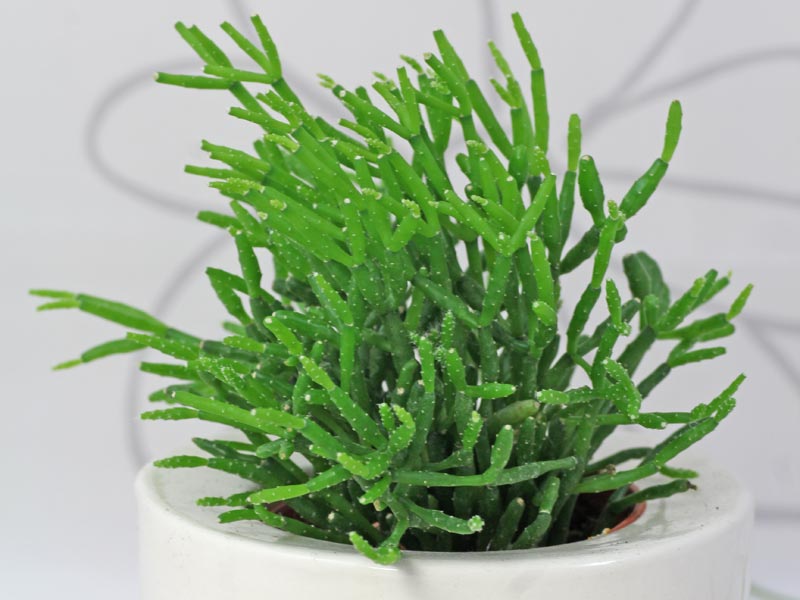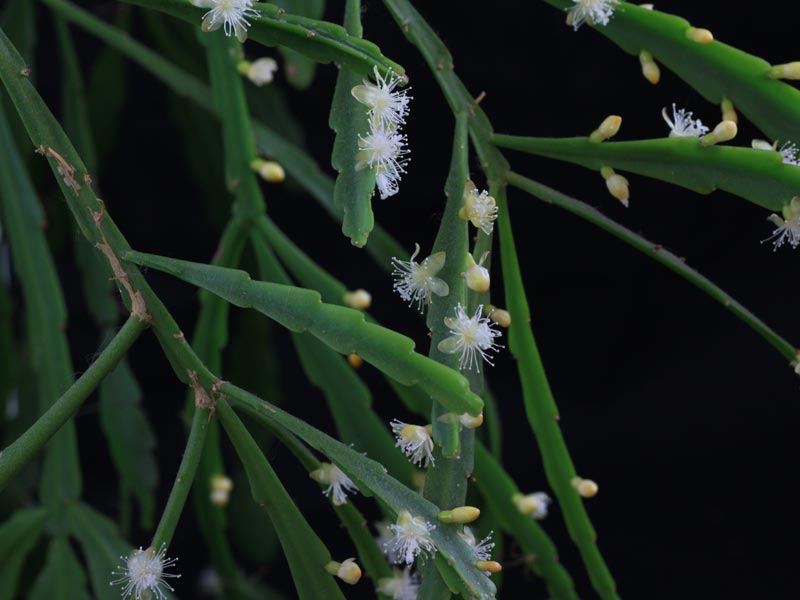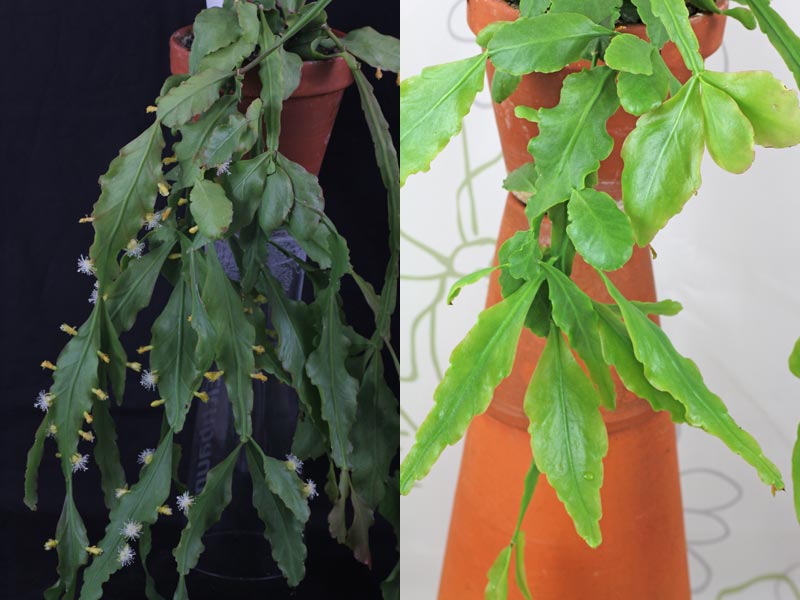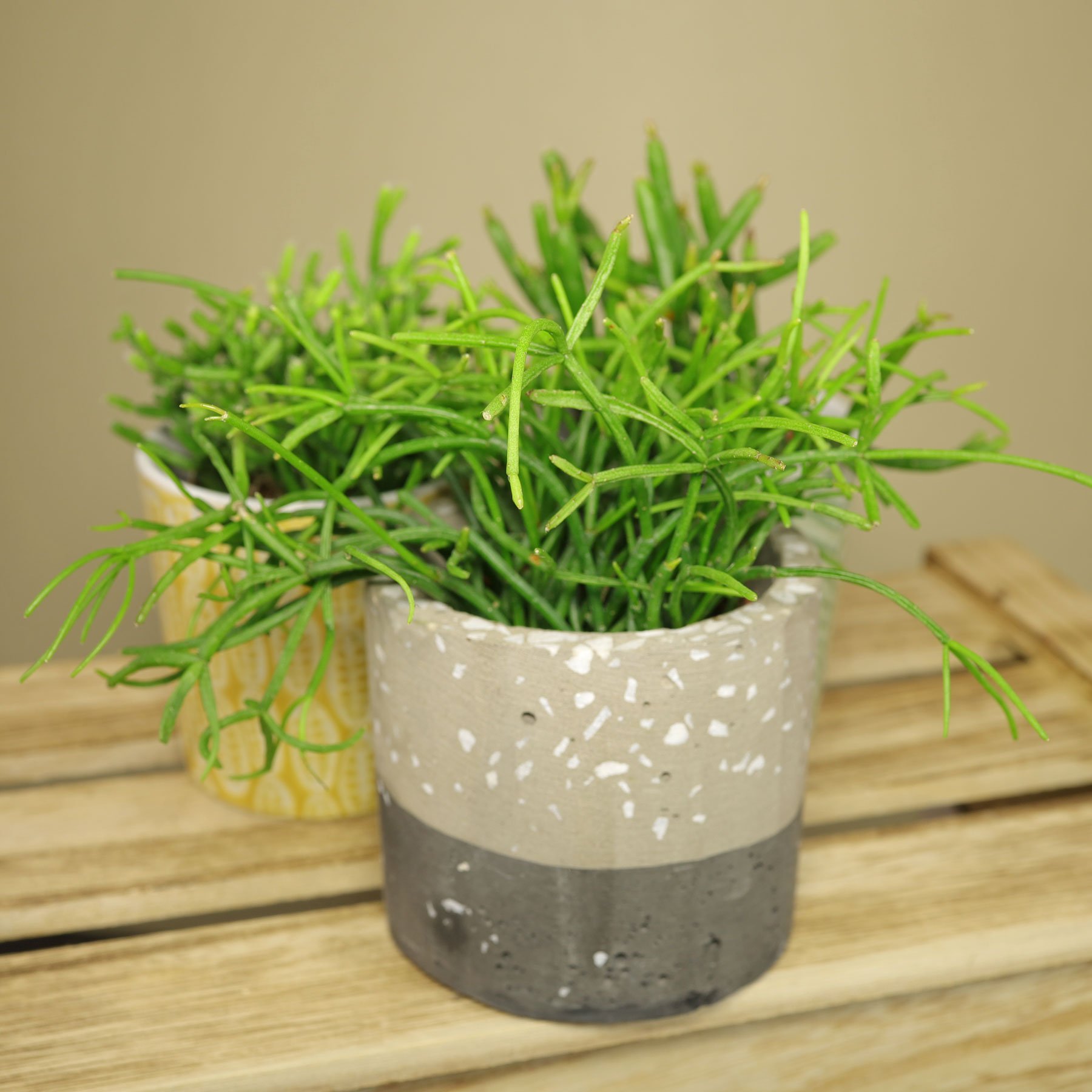
Rhipsalis care
- Lighting: bright with some morning or evening sun
- Watering: moist but not wet
- Feeding: half diluted given monthly from april to september
- Temperature: room temperature the year round, a winter minimum of 15 °c (59 °f)
- Soil: regular mixes for cacti and other succulents
Lighting
The members of the genus Rhipsalis grow best if located bright the year round with some morning or evening sun. Winter sun is also tolerated. Do not place them in the midday sun in summer, unless you place the pot at least at a distance of 50 centimetres behind the window. Otherwise the leaves can burn.
If a shaded from rain and the direct midday sun spot is available they can be placed in the garden or on the balcony during summer. But they must get used to the sun not being filtered through a window pain.
If the temperatures start to fall to lower than 15 °C (59 °F) lastingly, then they should be replaced indoors.
Soil
The soil should be well drained and contain minerals; a general cacti mix can be used. Anyone who does not tend to overwater can also use a regular potting mix, which however, holds the water longer. It can be made more permeable if you mix in some clay granules, perlite, spaghnum or small orchid bark.

Watering
How often Rhipsalis cacti should be watered depends on various factors, like for example the size of the plant in relation to the pot, the temperature and the substrate.
From spring to autumn they can be waterd copiously. Give as much water as the earth can take. Any excess that leaks into the saucer has to be removed after a few minutes. Stagnant water can lead to rotting of the roots. Allow to dry before watering next.
If water is needed can be gauged by the weight of the pot, a wet soil is heavier than dry.
Feeding
They can be feeded with a half diluted fertiliser for green plants or cacti given from april to september monthly. Newly purchased or freshly repotted plants need no fertiliser in the first twelve months.
Temperature
The members of the genus Rhipsalis can be grown at room temperature throughout the year with a winter minium of 15 °C (59 °F). At this temperature range watering has to be reduced, a feeder must not be given.

